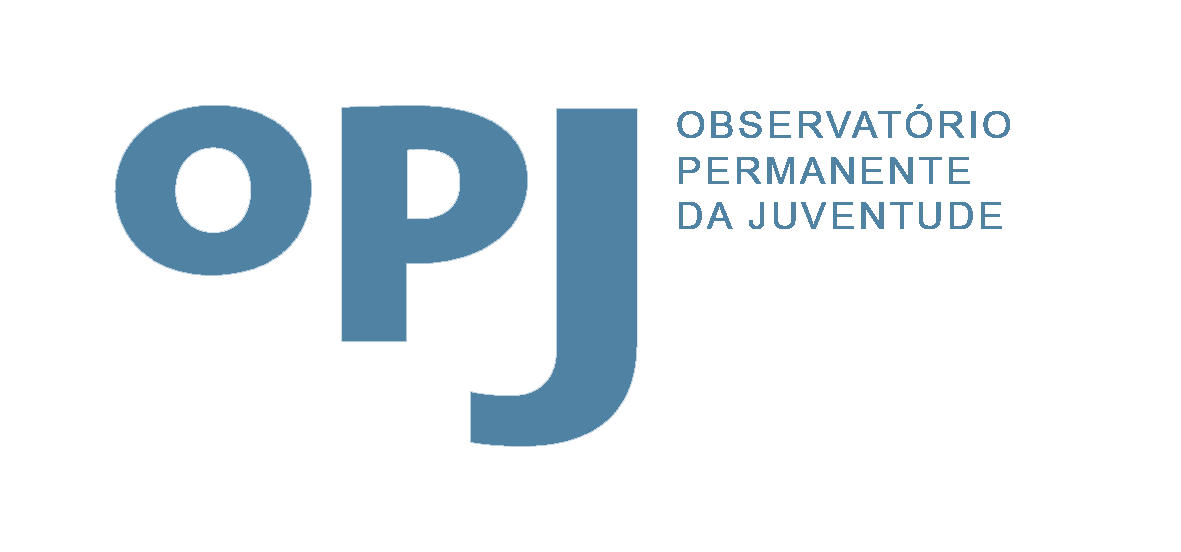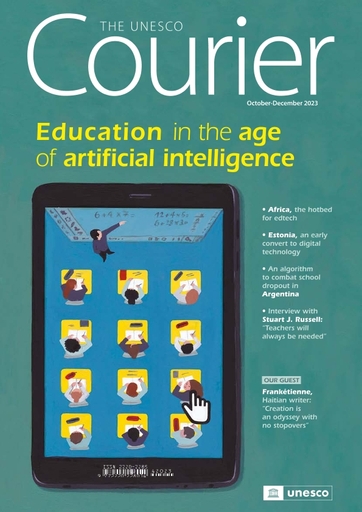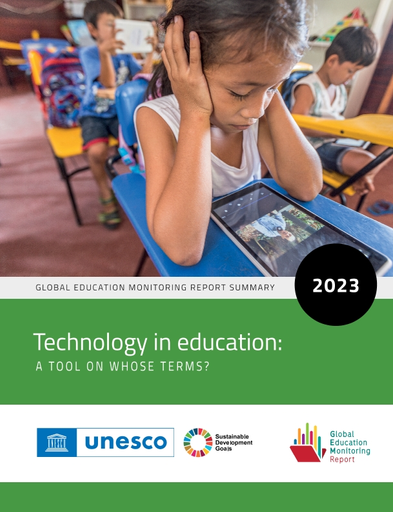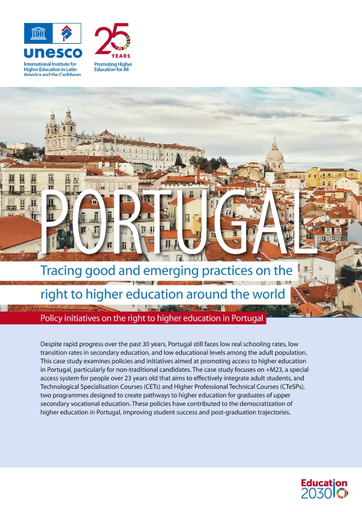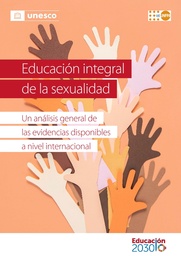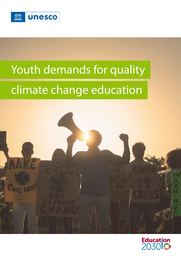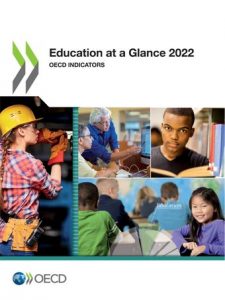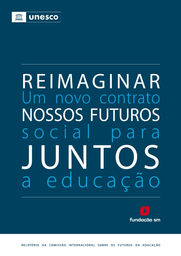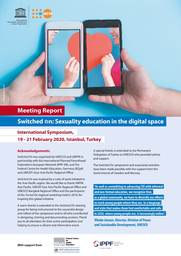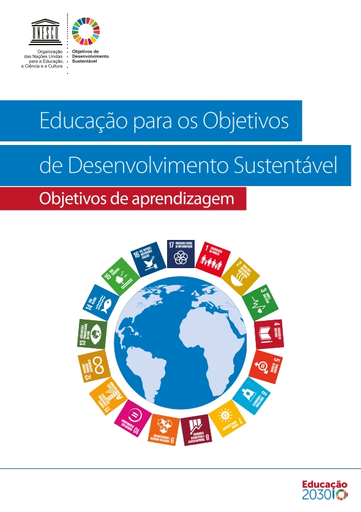Education in the age of artificial intelligence
UNESCO, 2023
Whether lauded or decried, technologies are increasingly part of the school landscape, at least in industrialized countries.Yet no matter how sophisticated they may be, they have not challenged the founding principle of a teacher giving a class simultaneously to a group of students. Artificial intelligence could be a game-changer. Does the arrival of content-generating tools like ChatGPT and intelligent tutorials mean the oft-heralded revolution has started?
Global education monitoring report summary, 2023: technology in education: a tool on whose terms?
Unesco, 2023
Technology’s role in education has been sparking intense debate for a long time. Does it democratize knowledge or threaten democracy by allowing a select few to control information? Does it offer boundless opportunities or lead towards a technology-dependent future with no return? Does it level the playing field or exacerbate inequality? Should it be used in teaching young children or is there a risk to their development? The debate has been fueled by the COVID-19 school closures and the emergence of generative artificial intelligence.
This new report recommends that technology should be introduced into education on the basis of evidence showing that it would be appropriate, equitable, scalable and sustainable. In other words, its use should be in learners’ best interests and should complement face-to-face interaction with teachers. It should be seen as a tool to be used on these terms.
Your Europe, your say
Youth democracy dialogues : summary report : youth event, 23-24 March 2023
Luxembourg. Publications Office of the European Union, 2023

Students from every corner of Europe took part in the 2023 youth summit on active citizenship and participatory democracy organised by the European Economic and Social Committee. During a two-day event in Brussels, students took part in workshops where they listened, learned and discussed participatory democracy with the aim of drawing up and presenting their recommendations on building communities of sustainable democracy.
Promoting diversity and inclusion in schools in Europe
Luxembourg. Publications Office of the European Union, 2023
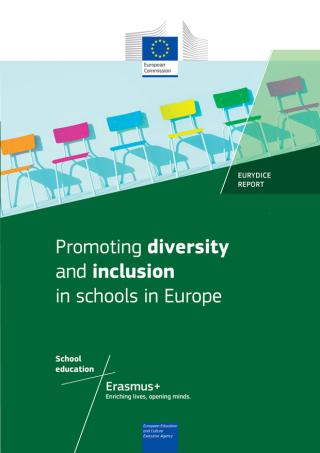
This report investigates existing national/top-level policies and measures that promote diversity and inclusion in school education.
It focuses especially on learners who are most likely to experience disadvantage and/or discrimination in schools, including girls/boys, students from different migrant, ethnic and religious backgrounds, LGBTIQ+ students, and students with special educational needs or disabilities. The report highlights existing targeted policy initiatives promoting the learners’ access to quality, inclusive, mainstream education.
It provides a comparative overview of policies and measures across 39 European education systems and presents many country examples, which showcase some of the most recent initiatives taken across Europe.
Portugal: tracing good and emerging practices on the right to higher education around the world; policy initiatives on the right to higher education in Portugal
UNESCO – Organização das Nações Unidas para a Educação, a Ciência e a Cultura
Data de publicação: 2023
Despite rapid progress over the past 30 years, Portugal still faces low real schooling rates, low transition rates in secondary education, and low educational levels among the adult population. This case study examines policies and initiatives aimed at promoting access to higher education in Portugal, particularly for non-traditional candidates. The case study focuses on +M23, a special access system for people over 23 years old that aims to effectively integrate adult students, and Technological Specialisation Courses (CETs) and Higher Professional Technical Courses (CTeSPs), two programmes designed to create pathways to higher education for graduates of upper secondary vocational education. These policies have contributed to the democratization of higher education in Portugal, improving student success and post-graduation trajectories.
Safe, seen and included: inclusion and diversity within sexuality education; briefing note
UNESCO – Organização das Nações Unidas para a Educação, a Ciência e a Cultura
Data de publicação: 2023
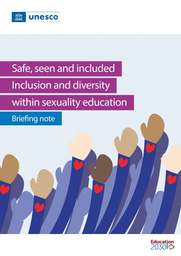
Educación integral de la sexualidad: un análisis general de las evidencias disponibles a nivel internacional
UNESCO – Organização das Nações Unidas para a Educação, a Ciência e a Cultura
Data de publicação: 2023
El objetivo de este informe es ofrecer una visión general de las revisiones sistemáticas disponibles a nivel internacional sobre la eficacia de los programas de Educación integral de la Sexualidad (EIS), así como de los mecanismos eficaces de la EIS y aquellos de mayor aceptabilidad. En particular, abordamos:
Contenido y enfoques
Prácticas innovadoras
Modalidades de aplicación
Vínculos con las familias y las comunidades
Mobility Scoreboard: Higher education background report – 2022/2023
Eurydice – European Education and Culture Executive Agency, 2023
Experiencing transnational mobility during education and training is a major boost in the life of many young people. Despite the added value that learner mobility brings and the increasing opportunities available, the path towards the free movement of students, researchers and trainees is still hampered by a number of obstacles. The purpose of the Mobility Scoreboard is to monitor progress made by European countries in promoting, and removing obstacles to, learning mobility. The report provides updated information on six scoreboard indicators in the areas of information and guidance, foreign language preparation, portability of grants and loans, support for disadvantaged learners, recognition of learning outcomes through the European Credit Transfer and Accumulation System (ECTS) and recognition of qualifications.
Iniciativa Gulbenkian Intergeracional – Relatório de Avaliação Externa.
Fundação Calouste Gulbenkian, 2023.
Soraia Teles, Sara Guerra, Maria João Azevedo, Óscar Ribeiro, Constança Paúl. Instituto de Ciências Biomédicas Abel Salazar da Universidade do Porto
A iniciativa Gulbenkian Intergeracional traduz-se em cinco anos de trabalho (2018-2022) dedicado a trazer a justiça intergeracional para a discussão pública e para a agenda política, assim como a incentivar os decisores políticos a considerar critérios de justiça intergeracional na definição de políticas públicas.
Findo o período de execução da iniciativa, a Fundação Calouste Gulbenkian (FCG) solicitou uma avaliação externa da iniciativa, com o intuito de apreciar a sua contribuição para i. a promoção da reflexão e do debate sobre justiça intergeracional, na discussão pública e na agenda política; e ii. incentivar os decisores políticos a considerarem critérios de justiça intergeracional na definição de políticas públicas. Pretendeu-se ainda iii. identificar os principais resultados (quantitativos e qualitativos) que foram gerados por esta iniciativa, bem como o valor/impacto trazido à sociedade; e iv. sinalizar as potencialidades e limites do projeto, tecendo recomendações.
Best practice interventions in Formal and Non-formal Education of Youth NEETs in Rural Areas Across Europe
COST Action CA 18213: Rural NEET Youth Network: Modeling the risks underlying rural NEETs social exclusion, supported by COST (European Cooperation in Science and Technology), 2022.
The COST Action Rural NEET Youth Network (RNYN) brings together multiple stakeholders, from researchers to policymakers and non-governmental organizations with the intention of informing research policies and programs that can ultimately promote rural NEETs’ social inclusion. As part of that vision, RNYN is now delivering a series of four reports which collate promising practices, programs, and case studies. Our reports cover four topics traversing RNYN’s thematic working groups: social inclusion; formal and non-formal education; employment and employment services; and, rural development. Altogether, we hope that these multiple angles of analysis will inspire further research or collaboration between institutions and people interested in moving forward rural NEETs, but also rural youth in general.
Employment and Employment Services for Rural NEETs: Initiatives for tackling NEETs’ and rural NEETs’ employment issues.
COST Action CA 18213: Rural NEET Youth Network: Modeling the risks underlying rural NEETs social exclusion, supported by COST (European Cooperation in Science and Technology), 2022.
The COST Action Rural NEET Youth Network (RNYN) brings together multiple stakeholders, from researchers to policymakers and non-governmental organizations with the intention of informing research policies and programs that can ultimately promote rural NEETs’ social inclusion. As part of that vision, RNYN is now delivering a series of four reports which collate promising practices, programs, and case studies. Our reports cover four topics traversing RNYN’s thematic working groups: social inclusion; formal and non-formal education; employment and employment services; and, rural development. Altogether, we hope that these multiple angles of analysis will inspire further research or collaboration between institutions and people interested in moving forward rural NEETs, but also rural youth in general.
Rural NEETs and Sustainability – Diverse, Multisectoral, and Multifunctional Environments Shaping Rural Areas and Daily Life
COST Action CA 18213: Rural NEET Youth Network: Modeling the risks underlying rural NEETs social exclusion, supported by COST (European Cooperation in Science and Technology), 2022.
The COST Action Rural NEET Youth Network (RNYN) brings together multiple stakeholders, from researchers to policymakers and non-governmental organizations with the intention of informing research policies and programs that can ultimately promote rural NEETs’ social inclusion. As part of that vision, RNYN is now delivering a series of four reports which collate promising practices, programs, and case studies. Our reports cover four topics traversing RNYN’s thematic working groups: social inclusion; formal and non-formal education; employment and employment services; and, rural development. Altogether, we hope that these multiple angles of analysis will inspire further research or collaboration between institutions and people interested in moving forward rural NEETs, but also rural youth in general.
Youth demands for quality climate change education
UNESCO – Organização das Nações Unidas para a Educação, a Ciência e a Cultura
Data de publicação: 2022
In an increasingly complex and interconnected world with a real, existential threat such as climate change, there is a growing call for education to enable individuals, as agents of change, to acquire the knowledge, skills, values and attitudes that lead to the green transition of our societies. However, according to UNESCO’s recent findings, not enough is being done. Nearly half of the 100 countries reviewed had no climate change mentioned in their national curriculum frameworks. While most of the 58,000 teachers surveyed(95 per cent) believe that it is important to teach about climate change, only about 23 per cent can explain thoroughly how to take climate action. These stark findings echo the intensifying eco-anxiety of young people, who note that they are frightened about their future
Global Employment Trends for Youth 2022: Investing in transforming futures for young people.
International Labour Organization 2022
The 2022 edition discusses the impact of the COVID-19 pandemic on young people and their labour market prospects during the recovery and beyond. Youth have been disproportionately affected by the pandemic and youth labour markets are now being buffeted by the lingering impacts of the pandemic, geopolitical risks and macroeconomic risks such as the impact of supply chain disruptions and rising inflation, particularly that of food and energy. There is also the potential permanent damage wreaked by these crises on the fabric of labour markets. As countries seek to address these multiple challenges, they must also not lose sight of longer-term priorities. In particular, targeted investment in the green, blue (ocean), digital, creative and care economies hold great potential to provide decent jobs for young people while setting economies on path towards greater sustainability, inclusiveness and resilience.
Perspetivas sobre a juventude: os jovens num mundo digitalizado
Conselho da Europa e Comissão Europeia, 2021. Tradução Portuguesa IPDJ, 2022.
Perspetivas sobre a Juventude pretende funcionar como um fórum de informação, discussão, reflexão e diálogo sobre os desenvolvimentos europeus no domínio da política de juventude, investigação juvenil e trabalho juvenil. O quarto número, está ligado ao Symposium on Youth Participation in a Digitalised World, evento importante da Comissão Europeia e do Conselho da Europa no domínio da juventude. Levanta questões no que diz respeito à participação dos jovens num mundo digitalizado.
Dalila Ghailani e outros
Luxembourg. Publications Office of the European Union, 2022
International Labour Organization 2022
This ILO global report on working time focuses on the actual number of hours of work, working-time arrangements, and their implications for work–life balance. It includes a range of statistics never before produced concerning the number of hours of work, both the situation as it existed immediately before the COVID-19 pandemic and also how it evolved during the pandemic. It then turns to the other half of the working-time equation, working time arrangements and reviews the most prominent types of working time arrangements that currently exist and their effects on workers’ work–life balance. Next, an in-depth analysis of the matches and mismatches between workers’ actual hours of work and their preferred hours of work, as well as the effects of such matches and mismatches on work–life balance is provided. The report also reviews and analyses the working time-related crisis response measures deployed by governments and enterprises to keep organizations functioning and workers employed during the COVID-19 pandemic. Finally, the report summarizes the main conclusions of all the previous chapters and considers their implications for both public policies and enterprise policies regarding working time and work–life balance.
Como escolher a minha futura profissão? Um guia passo a passo para quem procura emprego
Organização Internacional do Trabalho
Genebra. OIT, 2022
A escolha de uma profissão é uma etapa importante na transição da escola para trabalho e uma decisão importante. Possuir algumas ferramentas e técnicas pode ser a chave para um futuro profissional mais gratificante ao longo da vida. O guia da OIT, da coleção «Construir o meu futuro no trabalho», redigido de forma simples e clara é útil a jovens e a todas as pessoas que procuram emprego. Para além de apoiar o autoconhecimento e a valorização das competências, o Guia apresenta pistas sobre as principais tendências do futuro do trabalho.
Education at a Glance 2022
OECD Indicators
Education at a Glance is the authoritative source for data on the state of education around the world. It provides information on the structure, finances and performance of education systems across OECD countries and partner economies. It provides key information on the output of educational institutions; the impact of learning across countries; access, participation and progression in education; the financial resources invested in education; and teachers, the learning environment and the organisation of schools.
The 2022 edition focuses on tertiary education, looking at the rise of tertiary attainment and the associated benefits for individuals and for societies. It also considers the costs of tertiary education and how spending on education is divided across levels of government and between the state and individuals. A specific chapter is dedicated to the COVID crisis and the shift from crisis management to recovery. Two new indicators on professional development for teachers and school heads and on the profile of academic staff complement this year’s edition.
Annual activity report 2021 – Education, Youth, Sport and Culture

Study on youth work in the EU: final report
Directorate-General for Education, Youth, Sport and Culture
Luxembourg. Publications Office of the European Union, 2021
This study constitutes the second European-wide comparison on youth work published by the European Commission. The first European Commission study on youth work, published in 2014, was an exploratory investigation of youth work at European level, seeking to identify commonalities and to map the state of youth work policies across the EU. This second report goes further and focuses on the needs of youth workers at the grassroots level to critically analyse whether existing public policies fulfil these needs. This is a timely report: the COVID-19 pandemic has had a significant impact on the youth work sector. It has forced youth workers to rethink how they provide their services, and placed many in a precarious position, particularly at the local level and for youth workers who support the most vulnerable young people.
https://op.europa.eu/en/publication-detail/-/publication/5a8beedc-f0e1-11eb-a71c-01aa75ed71a1
Impact of COVID-19 on young people in the EU
Ezter Sándor e outros
Luxembourg. Publications Office of the European Union, 2021
Following a long recovery from the economic crisis (2007–2013), young people in the EU proved to be more vulnerable to the effects of the restrictions put in place to slow the spread of the COVID-19 pandemic. Young people were more likely than older groups to experience job loss, financial insecurity and mental health problems. They reported reduced life satisfaction and mental well-being associated with the stay-at-home requirements and school closures. While governments responded quickly to the pandemic, most efforts to mitigate the effects of restrictions were temporary measures aimed at preventing job loss and keeping young people in education. This report explores the effects of the pandemic on young people, particularly in terms of their employment, well-being and trust in institutions, and assesses the various policy measures introduced to alleviate these effects.
Reimaginar nossos futuros juntos: um novo contrato social para a educação
UNESCO – Organização das Nações Unidas para a Educação, a Ciência e a Cultura
Data de publicação: 2021
Este Relatório, elaborado durante dois anos e fundamentado em um processo de consulta global – que envolveu cerca de um milhão de pessoas –, convida governos, instituições, organizações e cidadãos de todo o mundo a idealizar um novo contrato social para a educação, que nos ajude a construir futuros pacíficos, justos e sustentáveis para todos.
As visões, os princípios e as propostas aqui apresentados são apenas um ponto de partida, e traduzi-los e contextualizá-los é um esforço coletivo. Muitos pontos de luz já existem, e este Relatório tenta captá-los e construir a partir deles; não é um manual nem um plano de ação, mas uma abertura para um diálogo vital.
Youth Progress Report 2021
Commissioned by the European Youth Forum, Brussels.
The Youth Progress Index 2021 fully ranks 150 countries, and 18 additional countries partially. It comprises 58 social and environmental indicators. It covers a 10 year time series with data from 2011 to 2020. If the world were a country, it would have a score of 65,78 out of 100.
In addition to the Index, this report looks at mega-trends which impact youth: digitalisation, COVID-19, a changing
labour market, and a shrinking civic space.
https://tools.youthforum.org/policy-library/wp-content/uploads/2021/07/YPI-2021-Full-Report.pdf
Education at a Glance 2021
OECD Indicators
 Education at a Glance is the authoritative source for information on the state of education around the world. It provides data on the structure, finances and performance of education systems across OECD countries and a number of partner economies. It provides key information on the output of educational institutions; the impact of learning across countries; access, participation and progression in education; the financial resources invested in education; and teachers, the learning environment and the organisation of schools.
Education at a Glance is the authoritative source for information on the state of education around the world. It provides data on the structure, finances and performance of education systems across OECD countries and a number of partner economies. It provides key information on the output of educational institutions; the impact of learning across countries; access, participation and progression in education; the financial resources invested in education; and teachers, the learning environment and the organisation of schools.
The 2021 edition includes a focus on equity, investigating how progress through education and the associated learning and labour market outcomes are impacted by dimensions such as gender, socio-economic status, country of birth and regional location. A specific chapter is dedicated to Target 4.5 of the Sustainable Development Goal 4 on equity in education, providing an assessment of where OECD and partner countries stand in providing equal access to quality education at all levels. Two new indicators on the mechanisms and formulas used to allocate public funding to schools and on teacher attrition rate complement this year’s edition.
Working Paper – O que pensam jovens a crescer em regiões de fronteira sobre o seu futuro?
Projeto GROW.UP – Crescer em regiões de fronteira em Portugal: jovens, percursos educativos e agendas (PTDC/CED-EDG/29943/2017)
Data de publicação: 2020
 O projeto GROW.UP – Crescer em regiões de fronteira em Portugal: jovens, percursos educativos e agendas (PTDC/CED-EDG/29943/2017) tem como objetivo investigar, em contextos de fronteira, as influências mútuas de fatores individuais, contextuais/institucionais e sistémicos nas expectativas, aspirações e biografias de jovens e analisar de que modo as comunidades/regiões estão proativamente a contrariar desigualdades, estimulando o investimento em percursos positivos. Encontramo-nos no segundo ano de execução do projeto, tendo sido realizado até ao momento a aplicação de um questionário a 3966 jovens do 9.º ao 12.º ano das 38 sedes de agrupamentos de escola das regiões de fronteira, desde Caminha a Vila Real de Santo António.
O projeto GROW.UP – Crescer em regiões de fronteira em Portugal: jovens, percursos educativos e agendas (PTDC/CED-EDG/29943/2017) tem como objetivo investigar, em contextos de fronteira, as influências mútuas de fatores individuais, contextuais/institucionais e sistémicos nas expectativas, aspirações e biografias de jovens e analisar de que modo as comunidades/regiões estão proativamente a contrariar desigualdades, estimulando o investimento em percursos positivos. Encontramo-nos no segundo ano de execução do projeto, tendo sido realizado até ao momento a aplicação de um questionário a 3966 jovens do 9.º ao 12.º ano das 38 sedes de agrupamentos de escola das regiões de fronteira, desde Caminha a Vila Real de Santo António.
O que agora damos a conhecer – com base nas respostas destes questionários – é o primeiro Policy Brief deste projeto. Aqui apresentam-se as perspectivas e expectativas que jovens que moram em regiões de fronteira têm sobre o seu futuro, sobre sair ou permanecer nas suas regiões e sobre as suas expectativas relativamente ao Ensino Superior.
Mobility Scoreboard: Higher Education Background Report – 2018/19
Eurydice
Data de publicação: Janeiro 2020
 “Eurydice’s ‘Mobility Scoreboard: Higher Education Background Report 2018/19’ supports the European Commission’s Mobility Scoreboard that follows up on the 2011 ‘Youth on the Move’ Recommendation of the Council of the European Union promoting the learning mobility of young people. The purpose of the Mobility Scoreboard is to provide a framework for monitoring progress made by European countries in promoting, and removing obstacles to, learning mobility. It covers both higher education and IVET – indicators for the latter were developed by Cedefop.
“Eurydice’s ‘Mobility Scoreboard: Higher Education Background Report 2018/19’ supports the European Commission’s Mobility Scoreboard that follows up on the 2011 ‘Youth on the Move’ Recommendation of the Council of the European Union promoting the learning mobility of young people. The purpose of the Mobility Scoreboard is to provide a framework for monitoring progress made by European countries in promoting, and removing obstacles to, learning mobility. It covers both higher education and IVET – indicators for the latter were developed by Cedefop.
Published three years after the first report, this second edition of the Eurydice higher education background report provides updated background information for six composite indicators on information and guidance, foreign language preparation, portability of grants and loans, participation of disadvantaged learners, recognition of learning outcomes and the automatic recognition of qualifications. Information for the year 2018/19 was provided by Eurydice National Units and covers the 28 EU Member States, Albania, Bosnia and Herzegovina, Switzerland, Iceland, Liechtenstein, Montenegro, North Macedonia, Norway, Serbia and Turkey.
Education at a Glance 2020
OECD Indicators
Education at a Glance is the authoritative source for information on the state of education around the world. It provides data on the structure, finances and performance of education systems across OECD countries and a number of partner economies. It provides key information on the output of educational institutions; the impact of learning across countries; access, participation and progression in education; the financial resources invested in education; and teachers, the learning environment and the organisation of schools.
The 2020 edition includes a focus on vocational education and training, investigating participation in vocational education and training at various levels of education, the labour market and social outcomes of vocational graduates as well as the human and financial resources invested in vocational institutions. Two new indicators on how vocational education and training systems differ around the world and on upper secondary completion rate complement this topic. A specific chapter is dedicated to the Sustainable Development Goal 4, and investigates the quality and participation in secondary education.
Insights sobre Inclusão Social e Digitalização
Conselho da Europa e Comissão Europeia, 2020
Neste segundo volume de Insights, exploramos a intersecção entre a inclusão social dos/as jovens e a digitalização, a fim de compreender até que ponto os desenvolvimentos no mundo digital têm ajudado à inclusão social de jovens marginalizados. Na presente publicação, examina-se as políticas e práticas europeias na intersecção da inclusão social com a da digitalização, relevantes para o domínio da juventude. Revemos os instrumentos (ferramentas, plataformas, etc.) dirigidos à formação de
especialistas na área da juventude e os instrumentos dirigidos aos/às próprios/as jovens, de responda às suas necessidades e interesses relacionados com a digitalização. Por fim, sabendo que a digitalização comporta tanto riscos quanto oportunidades
para os/as jovens, este é também um tema que abordamos na última parte.
https://bibliotecadodesporto.ipdj.pt/BiblioNET/Upload/E-BOOKS/Insights_pt.pdf
Switched on: sexuality education in the digital space, Istanbul, Turkey, 2020
UNESCO – Organização das Nações Unidas para a Educação, a Ciência e a Cultura
Data de publicação: 2020
This report summarizes the key elements and outcomes of Switched On, an international symposium exploring sexuality education in the digital space held in Istanbul, Turkey from 19 to 21 February 2020. The symposium explored the opportunities and challenges for capitalizing on digital spaces to strengthen efforts to deliver comprehensive sexuality education to adolescents and young people.
Education at a Glance 2019
OECD
Data de publicação: Setembro de 2019
Migration, displacement and education: Sustainable Development Building bridges, not walls
UNESCO
Data de publicação: 2019
This year the Report focuses on the theme of migration and displacement. It presents evidence on the implications of different types of migration and displacement for education systems but also the impact that reforming education curricula and approaches to pedagogy and teacher preparation can have on addressing the challenges and opportunities posed by migration and displacement. It gives voice to experiences in host and home communities.
The Teaching of Regional or Minority Languages in Schools in Europe
Eurydice
Data de publicação: Setembro de 2019

This Eurydice report provides an overview of current policy efforts in Europe that support the teaching of regional or minority languages in schools. It presents the references made to regional or minority languages by top-level education authorities in official documents. It also illustrates some of the existing policies and measures on teaching regional or minority languages in the different European education systems.
It concludes with an overview of some of the EU-funded projects and initiatives that support the teaching of regional or minority languages in schools in Europe.
Inequalities in the access of young people to information and support services
Eurofound
Data de publicação: Julho de 2019
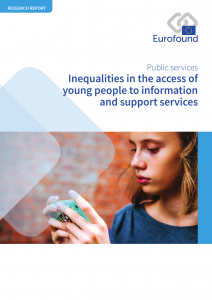 “In recent years, concerns have been expressed at EU and national level that the combined stresses arising from school, parental expectations and societal pressures can make the transition to adulthood difficult for young people – with the risk of a long-lasting negative impact. One way of easing the transition is to provide appropriate information and support services during these critical life-changing years. However, it appears that not all young people have access to such services. This report describes the characteristics of the young people who face most difficulties in accessing social and health services, the types of services most relevant to them and the main challenges they face in accessing information and support services. It also looks at what service providers can do to ensure they reach young people in need of their support and presents innovative examples of how to tackle inequalities in access to services.” (Eurydice, 2019)
“In recent years, concerns have been expressed at EU and national level that the combined stresses arising from school, parental expectations and societal pressures can make the transition to adulthood difficult for young people – with the risk of a long-lasting negative impact. One way of easing the transition is to provide appropriate information and support services during these critical life-changing years. However, it appears that not all young people have access to such services. This report describes the characteristics of the young people who face most difficulties in accessing social and health services, the types of services most relevant to them and the main challenges they face in accessing information and support services. It also looks at what service providers can do to ensure they reach young people in need of their support and presents innovative examples of how to tackle inequalities in access to services.” (Eurydice, 2019)
The Structure of the European Education Systems 2019/20: Schematic Diagrams
Eurydice
Data de publicação: Outubro de 2019
 “This report provides information on the structure of mainstream education in European countries from pre-primary to tertiary level for the 2019/20 school and academic year. It includes national schematic diagrams, a guide to reading the diagrams and a map showing the main organisational models of primary and lower secondary education. The information is available for 43 European education systems covering 38 countries participating in the EU’s Erasmus+ programme.” (Eurydice, 2019)
“This report provides information on the structure of mainstream education in European countries from pre-primary to tertiary level for the 2019/20 school and academic year. It includes national schematic diagrams, a guide to reading the diagrams and a map showing the main organisational models of primary and lower secondary education. The information is available for 43 European education systems covering 38 countries participating in the EU’s Erasmus+ programme.” (Eurydice, 2019)
Youth and the 2030 Agenda for Sustainable Development
ONU
Data de publicação: Julho de 2019

“The World Youth Report on “Youth and the 2030 Agenda for Sustainable Development”, prepared by the United Nations Department of Economic and Social Affairs (UN DESA), examines the mutually supportive roles of the new agenda and current youth development efforts. The report provides insight into the role of young people in sustainable development in the context of the implementation of the 2030 Agenda for Sustainable Development and related frameworks, in particular, the Addis Ababa Action Agenda of the Third International Conference on Financing for Development and the World Programme of Action for Youth.
The Report considers the role the 2030 Agenda can play in enhancing youth development efforts and examines how evidence-based youth policies can help accelerate youth-related objectives. It explores the critical role young people have in the implementation of sustainable development efforts at all levels.” (United Nations, 2018)
The Sctructure of the European Education Systems 2018/19: Schematic Diagrams
Eurydice
Data de publicação: Outubro de 2018
This report provides information on the structure of mainstream education in European countries from pre-primary to tertiary level for the 2018/19 school and academic year. It includes national schematic diagrams, an explanatory guide and a map showing the main organisational models of compulsory education. The information is available for 43 European education systems covering 38 countries participating in the EU’s Erasmus+ programme.
Education at a Glance 2018
OECD
Data de publicação: Setembro de 2018
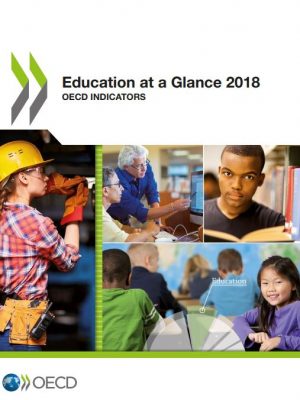 This book brings together contributions from the ILO’s Youth Employment Programme detailing policies that enable young people to find decent work. The chapters are organized around the pillars of the ILO’s 2012 call for action on youth employment and consider the impacts of a broad range of interventions including fiscal and sectoral development policies, minimum wages and active labour market programmes. An important theme running through the book – in addition to the growing instability of youth employment – is the importance of interactions and complementarities between institutions, policies and the broader economic context.
This book brings together contributions from the ILO’s Youth Employment Programme detailing policies that enable young people to find decent work. The chapters are organized around the pillars of the ILO’s 2012 call for action on youth employment and consider the impacts of a broad range of interventions including fiscal and sectoral development policies, minimum wages and active labour market programmes. An important theme running through the book – in addition to the growing instability of youth employment – is the importance of interactions and complementarities between institutions, policies and the broader economic context.
Long-term unemployed youth: characteristics and policy responses
Eurofound
Data de publicação: Dezembro de 2017
While the youth labour market has improved considerably since 2014, one legacy of the recent economic crisis is the large cohort of long-term unemployed young people, which represents nearly one-third of jobless young people. This report provides an updated profile of the youth labour market in 2016 and describes trends over the past decade.
Rising to the youth employment challenge: New evidence on key policy issues
OIT
Data de publicação: Agosto de 2017
 This book brings together contributions from the ILO’s Youth Employment Programme detailing policies that enable young people to find decent work. The chapters are organized around the pillars of the ILO’s 2012 call for action on youth employment and consider the impacts of a broad range of interventions including fiscal and sectoral development policies, minimum wages and active labour market programmes. An important theme running through the book – in addition to the growing instability of youth employment – is the importance of interactions and complementarities between institutions, policies and the broader economic context.
This book brings together contributions from the ILO’s Youth Employment Programme detailing policies that enable young people to find decent work. The chapters are organized around the pillars of the ILO’s 2012 call for action on youth employment and consider the impacts of a broad range of interventions including fiscal and sectoral development policies, minimum wages and active labour market programmes. An important theme running through the book – in addition to the growing instability of youth employment – is the importance of interactions and complementarities between institutions, policies and the broader economic context.
Educação para os Objetivos de Desenvolvimento Sustentável: Objetivos de aprendizagem
Organização das Nações Unidas para a Educação, a Ciência e a Cultura
Data de Publicação: 2017
A nova Agenda 2030 para o Desenvolvimento Sustentável reflete claramente essa visão da importância de uma resposta edu-cacional adequada. A educação é explicitamente formulada como um objetivo independente – o Objetivo de Desenvolvimento Sustentável 4. Numerosas metas e indicadores relacionados à educação também estão contemplados nos outros Objetivos de Desenvolvimento Sustentável (ODS).
O objetivo desta publicação é ser um guia para profissionais da educação sobre o uso da EDS na aprendizagem para os ODS e, consequentemente, contribuir para a realização dos ODS. O guia identifica objetivos de aprendizagem indicativos e sugere temas e atividades de aprendizagem para cada ODS. Ele também apresenta métodos de implementação em diferentes níveis, desde a formulação de cursos até estratégias nacionais
Structural Indicators for Monitoring Education and Training Systems in Europe 2016 – Thematic Overviews
Data de publicação: Fevereiro de 2017
These thematic overviews provide background information to the Education and Training Monitor 2016, and examine education structures, policies and reforms in five key areas:
Early childhood education and care
Achievement in basic skills
Early leaving from Education and Training
Higher Education
Graduate Employability.
Retrato dos Jovens
Data de publicação: Abril de 2017
Resumo de indicadores que retratam os Jovens em seis áreas essenciais: população, família, protecção social e pobreza, educação, mercado de trabalho, digital.
Exploring the diversity of NEETs
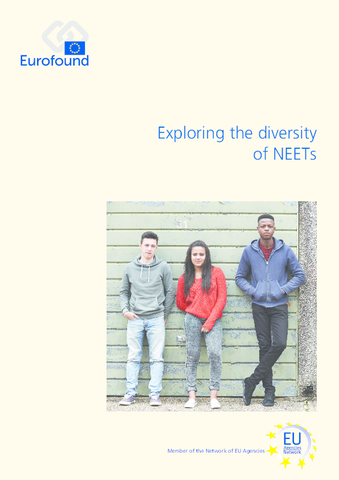 Data de publicção: Julho de 2016
Data de publicção: Julho de 2016
The concept of NEET (young people not in employment, education or training) has, since 2010, been widely used as a tool to inform youth-oriented policies in the 28 Member States of the European Union. While it has been a valuable addition to more traditional indicators used to understand the economic and social vulnerability of young people and their labour market participation, it has often been criticised because of the heterogeneity of the population it captures. This report explores the diversity of NEETs and suggests seven subgroups into which the NEET population can be disaggregated using data routinely collected for the EU Labour Force Survey.
Jovens no mercado de trabalho : módulo ad hoc de 2016 do Inquérito ao Emprego
«Com a temática Jovens no mercado de trabalho visa-se dispor de informação comparável, ao nível europeu, sobre a situação dos jovens no mercado de trabalho, com vista a monitorizar os objetivos definidos na Estratégia Europa 2020 e na iniciativa Juventude em Movimento.
Este tema ganha ainda mais relevância por se tratar de uma geração com níveis médios de qualificação mais elevados do que as gerações precedentes, a que se associa, no entanto, uma elevada taxa de desemprego, refletindo uma maior dificuldade de entrada no mercado de trabalho.
Este módulo integra o programa de módulos ad hoc para o triénio 2016-2018, definido no Regulamento Delegado da Comissão (UE) N.º 1397/2014, de 22 de outubro, e segue as recomendações metodológicas e técnicas definidas no questionário modelo do Eurostat.»
Being young in Europe today
Social inclusion of young people
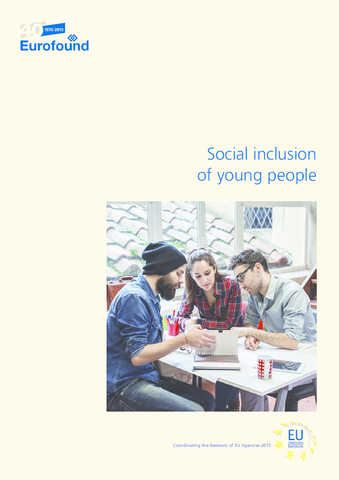 Data de publicação: Setembro de 2015
Data de publicação: Setembro de 2015
Since the onset of the economic crisis, the unemployment level among young people has risen sharply and although an improvement is now being registered some EU countries still have stubbornly high youth unemployment rates. Young people, especially those who are not in employment, education or training (NEET), are now the group at highest risk of social exclusion, with severe consequences not only for the individuals concerned but for the economy and society as a whole.
 ENGLISH
ENGLISH